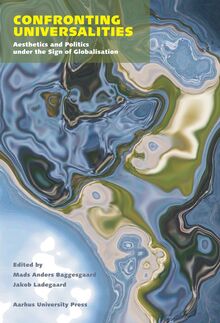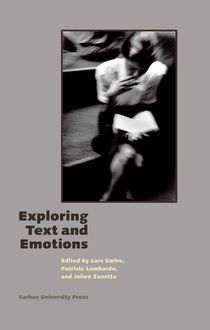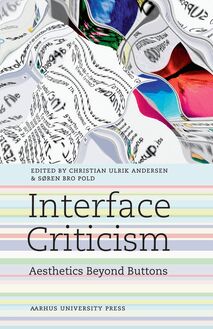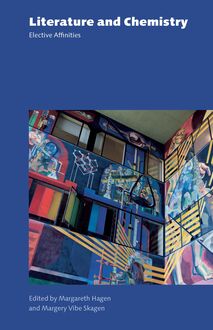Literature and Chemistry , livre ebook
155
pages
English
Ebooks
2014
Vous pourrez modifier la taille du texte de cet ouvrage
Obtenez un accès à la bibliothèque pour le consulter en ligne En savoir plus
Découvre YouScribe en t'inscrivant gratuitement
Découvre YouScribe en t'inscrivant gratuitement
155
pages
English
Ebooks
2014
Vous pourrez modifier la taille du texte de cet ouvrage
Obtenez un accès à la bibliothèque pour le consulter en ligne En savoir plus
Publié par
Date de parution
21 février 2014
Nombre de lectures
0
EAN13
9788771246278
Langue
English
Poids de l'ouvrage
1 Mo
Publié par
Date de parution
21 février 2014
Nombre de lectures
0
EAN13
9788771246278
Langue
English
Poids de l'ouvrage
1 Mo
Edited by Margareth Hagen and Margery Vibe Skagen
LITERATURE AND CHEMISTRY
Elective Affinities
INTRODUCTION
LITERATURE AND CHEMISTRY: ARTS AND CRAFTS OF TRANSFORMATION
Scientia sine conscientia ruina animae 1
The present volume represents the continuation of a dialogue between literary scholars, historians of culture and science, and chemists that started two years ago. On the occasion of the UNESCO International Year of Chemistry 2011, the interdisciplinary conference Literature and Chemistry: Elective Affinities was organised by the research group Literature and Science at the Department of Foreign Languages of the University of Bergen (Norway) on 27-8 October. The sixteen essays that came out of this event, all excursions into the mostly uncultivated field of chemical humanities , are here addressed to scholars and students of literature as well as to all readers interested in the historical and cultural affinities between the natural sciences and the arts. Covering a wide range of topics, epochs, and approaches, the essays are loosely organised into six different sections. In the following, they will be introduced progressively as pertaining to the branch of literary studies known as Literature and Science .
The first section below presents our general approach to the subdiscipline of literature and science, while the second summarises the recent development of the sub-subdiscipline of literature and chemistry. The five following sections contextualise the descriptions of the volume s essays within their respective subject areas, while the final parts add up the numerous affinities between the literary and chemical crafts, arguing for the relevance of literature and chemistry in the study of the past, present, and future of human culture.
LITERATURE AND SCIENCE: RECIPROCITY AND RESPECT FOR DIFFERENCES
Explorations of the interfaces of literature and science over recent decades have consolidated this subdiscipline s academic status as a necessary and rewarding area of research. In the 1978 manifesto Literature and Science: The State of the Field , cultural historian George Rousseau relates its evolution up to that date through the works of literary and intellectual historians attentive to the documentation of scientific influence on creative literature; further, he states the urgent need of cultivating reciprocity and facing that vastly demanding question of how literature has shaped or can shape scientific development (Rousseau, p. 587). Since then, the enriching and clarifying consequences of literature and science studies for each of the two cultures have become increasingly evident. Authors, readers, and literary scholars find in the different branches of hard science, motives, models, and metaphoric instruments for grasping, describing, and plotting seen, unseen, and unforeseen realities. On the other hand, literary rhetoric, philosophy, aesthetics, and histories of science are acknowledged not only as intrinsic tools for scientific communication, but as fundamental methods and theories for understanding the human nature of all science, and the importance of a conscious human engagement with scientific realities.
In spite of acknowledged interdependency, encounters in literature and science are seldom motivated by ongoing disciplinary harmonisation. The differences between the two cultures are not merely obstacles to mutual understanding, they challenge and energize disciplinary identities and provoke innovation. The insertion of scientific discourse in a literary text may be a simple way of creating an impression of rupture, strangeness, or incongruity, introducing that slight but productive alienation which takes nothing for granted, and gives the reader an urge to rediscover and redefine the world. Scientific discovery can thrive on lack of familiarity , 2 states the chemist and science writer Pierre Laszlo, encouraging the spirit of intellectual nomadism : an ideal of interdisciplinary border-crossing, modelled on the ventures of nomadic tribes, people and nations, and the cultural and scientific fertilisation they have occasioned throughout history. According to Laszlo, whose writing on chemistry makes use of a variety of approaches and genres from cultural history to essays on aesthetics, and scientific papers, there is not just a border but a chasm separating natural scientists and academics in the humanities:
These are different tribes! [ ] That they misunderstand one another occasionally is to be expected. The main obstacle is a dissymmetry. It has to do with linguistic competence. It runs deep. Humanists in general lack the technical language, hence the understanding of science, whether astronomy or chemistry. Scientists are not trained to value opinions or viewpoints. For them, any working hypothesis is only as good as its conformity with the data. At a deeper level, scientists are unaware of the dominion from language on the mind.
Notwithstanding the persistent gap between the two cultures, literature and science studies are constant reminders of the once thinkable ideal of universal knowledge, and of the polymathic striving characteristic of many literary and scientific writers of the past. Among the authors discussed in this anthology there are several literary and scientific writers of great, specialised, and varied learning: Mikhail Lomonosov, Johann Wolfgang Goethe, Humphry Davy, August Strindberg, Ludwig Boltzmann, Raymond Queneau, Primo Levi, Oliver Sacks. If some have regarded literature and science as different means in a common pursuit, one may ask to what degree they believed in the possibility of infusing - without significant distortion - their scientific knowledge into literary writing. But as Gillian Beer has emphasised, science in literature is not so much translation of stable meanings as transformation:
Scientific material does not have clear boundaries once it has entered literature. Once scientific arguments and ideas are read outside the genre of the scientific paper and the institution of the scientific journal, change has already begun. (Beer, p. 90)
In sharp contrast to technical writers striving for univocality, everyday language is vague, allowing the play of a vast range of shadow significations alongside each word s functional meaning. The often deliberate openness of literary language is an obvious indicator of how science changes, becoming inaccurate and plurivocal in new settings. Closer analysis of how specific texts reformulate, transform, or twist scientific material for their own purposes can make us more aware of the apparent ease with which, in language, we inhabit multiple, often contradictory, epistemologies at the same time, all the time (Beer, p. 82).
The valorisation of reading and writing literary texts generally implies that there is some knowledge to be gained from sharing the phenomenality of subjective experience. Literature is modelled on inter-subjective communication between subjective writers and readers, encompassing their biographical, social, or most private selves and their imaginary self-projections. Variations between personal and impersonal points of view, engaged and detached gazes, create tensions vital to much modern literature. As with all dichotomies, subject-object dualism has been under fire also in literature and science scholarship. An awareness of the questionable status of the objectivity of natural sciences has been underscored recently by Bruno Latour, who asks Which language shall we speak with Gaia? 3 and proposes a new empathic scientific language capable of animating the objects of scientific scrutiny:
[T]he Earth is no longer objective , it cannot be put at a distance and emptied of all Its humans. Human action is visible everywhere - in the construction of knowledge as well as in the production of the phenomena those sciences are called to register. (Latour, p. 7) 4
We will not dispute the necessity of levelling humankind and nature in a future inter-subjective scientific discourse; we will, however, look to the debate between philosopher Paul Ricoeur and neuroscientist and founder of neuroesthetics Jean-Pierre Changeux as a reminder of the necessity of maintaining some clear distinctions when it comes to literary and philosophical discourses on subjective experience. Responding critically to Changeux s attempt to define aesthetics with the tools and technologies of neuroscience, and art as productions of the physical-chemical machinery of the brain, Ricoeur simply reminds us of the semantic distinction between the brain as an object of science - its neurons, synapses, neurotransmitters, etc. - and my brain as it is inhabited by my subjective thinking. The lived body cannot be reduced to the body of scientific study. 5 It is crucial both to avoid confusing the two different discursive orders and to develop a third order which respects, distinguishes, and articulates the differences between the electro-chemical processes on one level and consciousness on another. The brain thinks is a typical example of semantic confusion between scientific and phenomenological discourses: The brain does not think , replies Ricoeur, I think .
In contexts of interdisciplinary rivalry, scientific generalisation and objectivisation are automatically associated with reductionism. But in the same way as scientists have been told that they need to be more conscious of their dependency on language, culture, and society, scientists have often accused literature and science scholars of dilettantism. Some see them as high-flying theoretical misreaders of scientists hard-earned laboratory knowledge. Accusations of reductionism are also heard within the humanities against the literary scholar forgetful of disciplinary essentials in his or her search for a common ground with the hard sciences.
This anthology s main focus is on th



